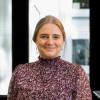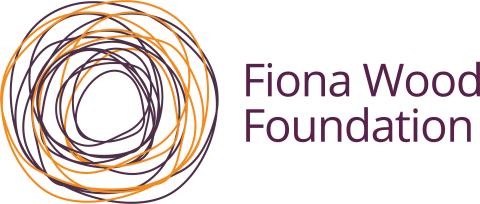SPECIAL REPORT: The female leaders of four major medical research foundations are using experience from their diverse backgrounds to improve medical research in the state.


The female leaders of four major medical research foundations are using experience from their diverse backgrounds to improve medical research in the state.
The leaders of the state’s medical research foundations are choosing collaboration over competition, meeting regularly on Fridays to discuss how their organisations can cooperate.
Charlies Foundation for Research executive director Vicki Rasmussen, Spinnaker Health Research Foundation chief executive Dana Henderson, Raine Medical Research Foundation director Amanda Cleaver, and RPH Research Foundation chief executive Jocelyn Young have prioritised working together to improve healthcare in Western Australia.
(click here to view a PDF version of this special report)
Ms Rasmussen said the meetings were about collaborating, building networks, and ensuring the foundations weren’t duplicating research.
“One of the things has been that we have been too isolated and too siloed previously,” Ms Rasmussen told Business News.
“There are too many opportunities that are potentially going to go unmet if we don’t collaborate better, and I think we are putting ourselves in a really exciting position with some of the projects that are coming up.
“Donors don’t want to see duplication, don’t want to see replication … they want to understand that we are all at least talking to each other and having respectful conversations and, where possible, collaborating.
“They don’t expect us to be merging or having one big giant organisation, but they do want us talking to each other.”
The group’s members also exchange management advice and provide feedback on one another’s ideas.
Dr Cleaver said she had provided Ms Young with advice about grant management processes and databases, and helped Ms Rasmussen with grant review processes.
“Vicki lent us donation tins for one of our events in Raine Square also,” Dr Cleaver said.
“But when we meet we just talk about what we are doing and provide feedback [and] advice where we can.”
With backgrounds as diverse as sports physiotherapy, fundraising, business development and medical research, the four women have different stories and took different pathways to the top.
Before Ms Young was appointed chief executive, she was a board member of RPH Research Foundation and sat on a panel interviewing candidates for her future role.
When the board found there were no suitable candidates, Ms Young offered to step into the position for three months but, with a previous career as a sports physiotherapist, no research background and a small child at home, didn’t consider herself for the permanent position.
“[I thought] I’m not a researcher, I don’t have that research background, so therefore it’s not appropriate,” Ms Young told Business News.
“But the reality is, going through the interview process, not everyone ticks all the boxes, they just can’t; it’s not possible to have this breadth of experience in one person, so I think there probably was a bit of imposter syndrome.
“The reality is that when you take on a CEO role you’re not going to have strengths in every area, and you need to fill those gaps with the right people.”
Ms Young said she decided to take the role for six months to make sure she was the right fit, and discovered she loved it.
“I think it is a good story for young people and particularly young women,” she said.
Timing, family
With a career as a fundraising professional, Ms Rasmussen said she was ambitious and running an organisation was always part of her career plan.
“It was just timing,” she said.
“It was looking for the organisation that really did fit with where my passion was sitting and medical research was one of those, through my other experiences.”
Originally a medical researcher, Dr Cleaver found the funding environment competitive and taking time out to have a family could put her on the back foot.
“As a researcher, you’re just trying to survive and get your pay cheque because you are trying to apply for competitive funding constantly,” Dr Cleaver said.
To give her options before having a family, Dr Cleaver enrolled in an MBA course and took a job in research development at The University of Western Australia.
More recent changes to policy have ensured the decision to have a family alongside a research career is more achievable, with time taken out of the workforce considered by funding bodies.
“In the research area it is difficult because you have to maintain that competitive advantage, so the NHMRC and other national sources of funding have now got career disruption criteria within all of their grant programs,” Dr Cleaver said.
Accidental career
Ms Henderson was a stay-at-home mother before re-entering the workforce.
Working at Murdoch University and Perth Festival before becoming chief executive at Spinnaker, Ms Henderson told Business News she was never very certain about a career plan, she fell into it instead.
“This was a fabulous door that opened with a very passionate board who convinced me this was my next best move, and I’m glad they did,” Ms Henderson said.
Select group
The four women are among the small number of female chief executives and directors in WA.
Ms Henderson said the more senior roles she had taken, the more evident it became to her that men and women were treated differently in the workplace.
“I’ve noticed more issues with gender and I think that’s probably again because there are fewer executives who are women, so you are not sitting at the table with like-being-like,” she said.
“I find that’s an interesting scenario, not just because there’s an imbalance in the way that I’m treated but there is an imbalance in the perspectives or the traits you might bring to the table.”
According to the Workplace Gender Equality Agency, the health sector is Australia’s most female-dominated industry; despite this it has a gender pay gap of 15.8 per cent, suggesting women are still not progressing to leadership roles.
Australian Bureau of Statistics data from 2019 found young women aged between 25 and 29 are better educated than their male counterparts, with 44.5 per cent of women holding a bachelor’s degree compared to 32.2 per cent of men.
“I find it very alarming that we are over-represented in the undergraduate degrees and then very poorly represented at the executive level,” Ms Henderson said.
“I think there is a leadership opportunity for women to really take that next generation through.”
To create an equitable workplace, Ms Henderson said it was essential the issue was viewed in a broader context than simply being a ‘women’s issue’.
“It is a whole-of-community conversation and a loud, articulate conversation, not just a nod of agreement when asked if gender equity is important,” she said.
“It is a conversation that needs to happen at every level of society and it needs to start early.
“Not just with those ambitious enough to try to rise to leadership, but with everyone, male and female, so that our girls and women know they can and our men and boys support them.”
Ms Young agreed and said women in leadership conferences and groups provided a great support network, but needed to have all-inclusive CEO networks to solve the issue.
“I often go to these women’s breakfasts and someone once asked me for feedback and they said, ‘How was the breakfast?’ and I said, ‘It was fantastic except there were no men, we are preaching to the converted’.
“It’s probably a slightly different prevailing view than the commonly held view that we need to come together as women and we need to stay strong … but ultimately, if we want to work and play together, we need to come together.
“And men need to be hearing the same things that the women are hearing.
“That for me is a disconnect.”
















